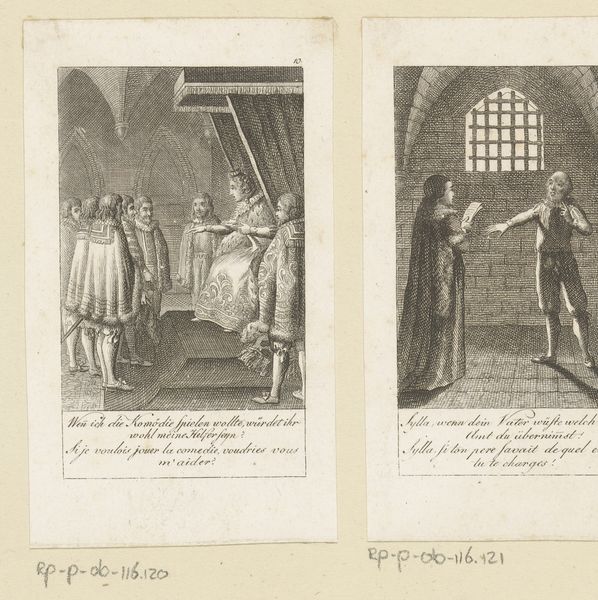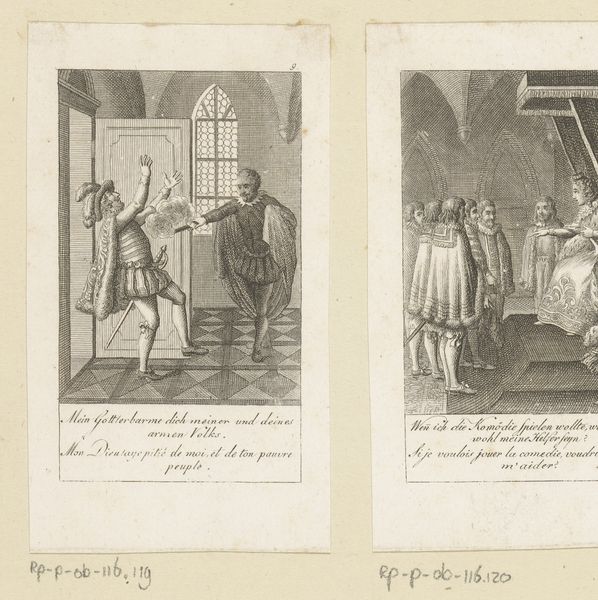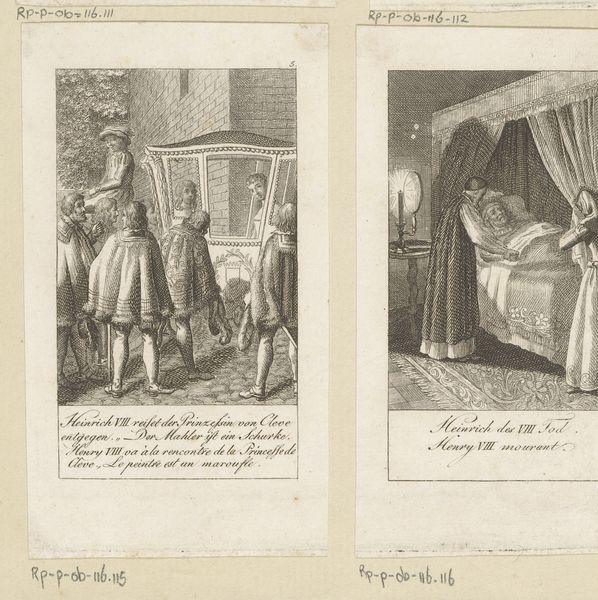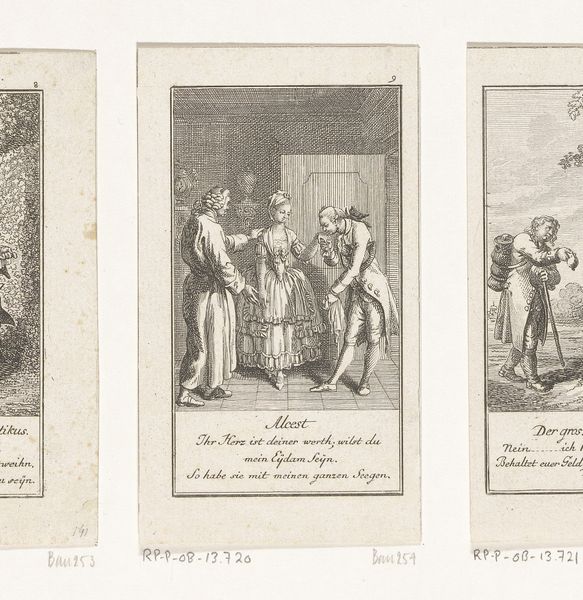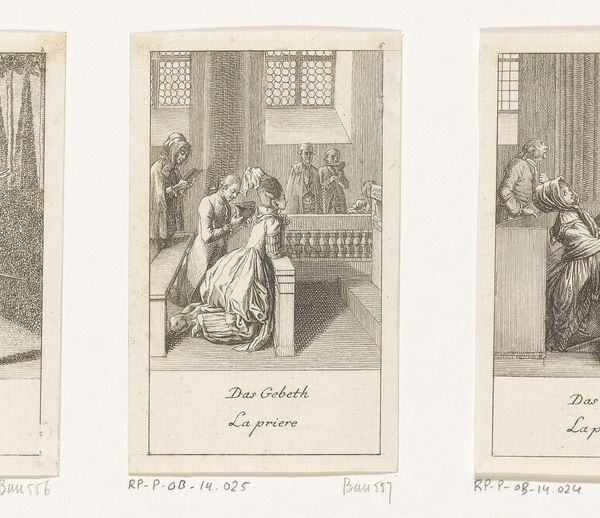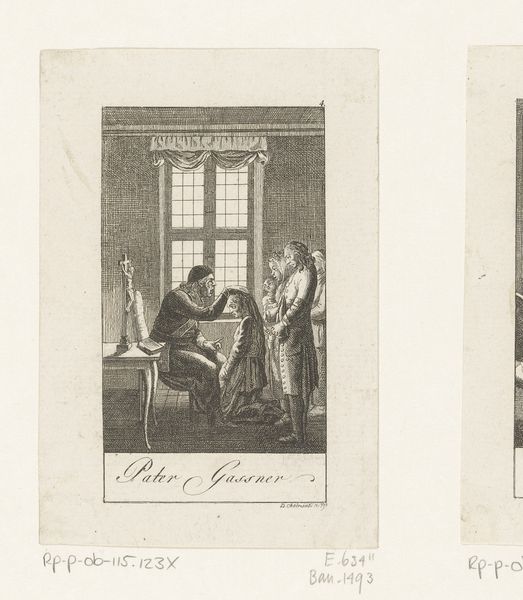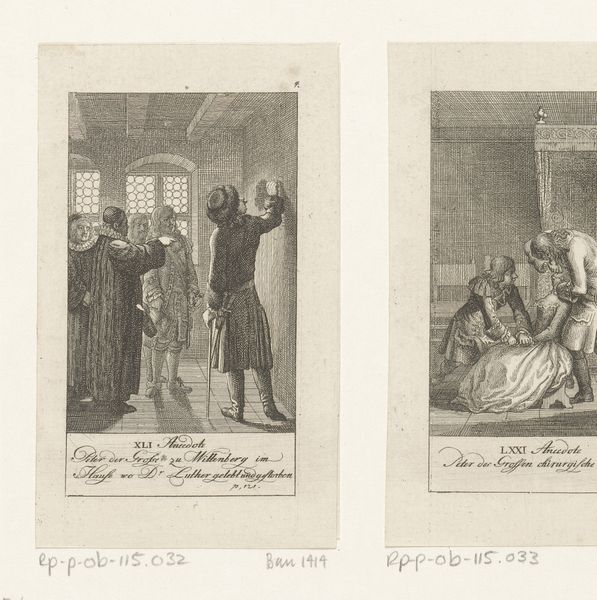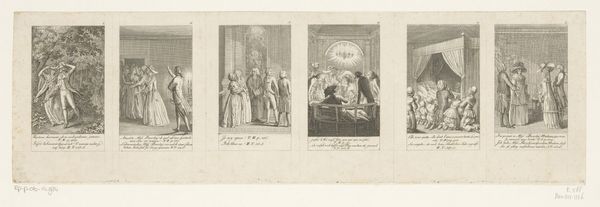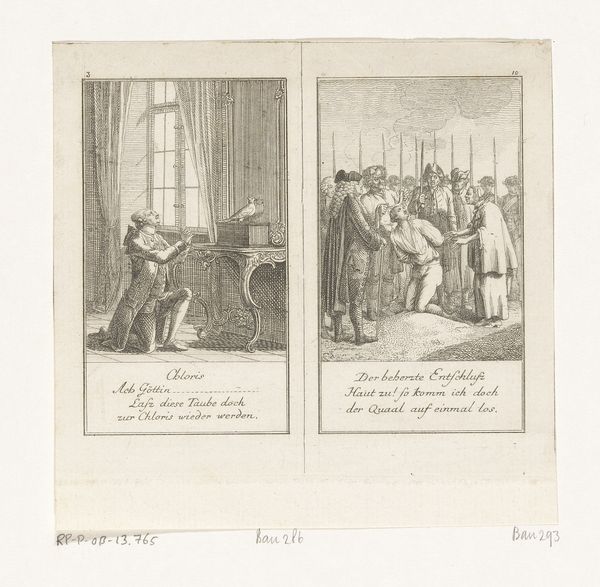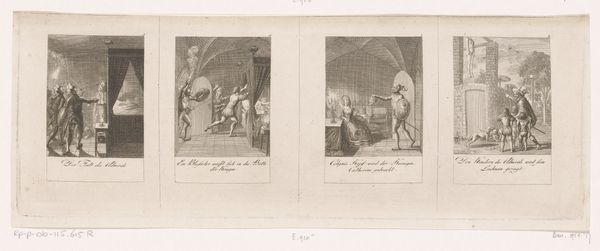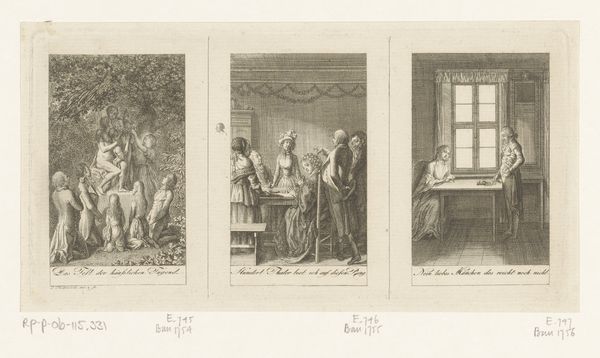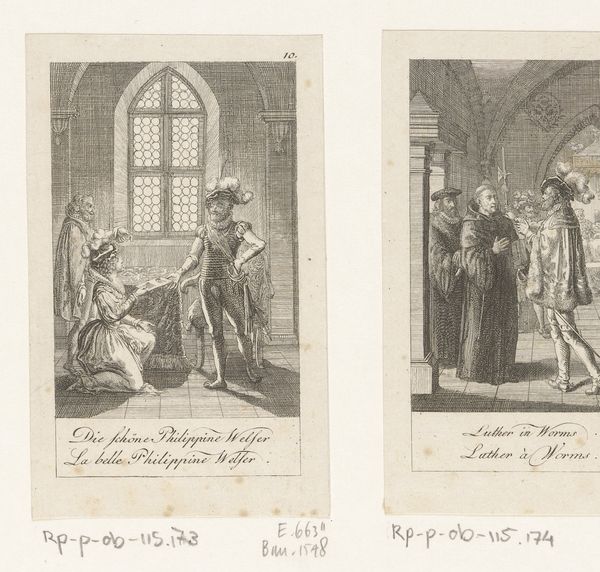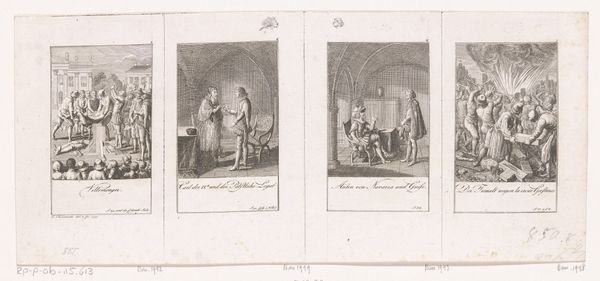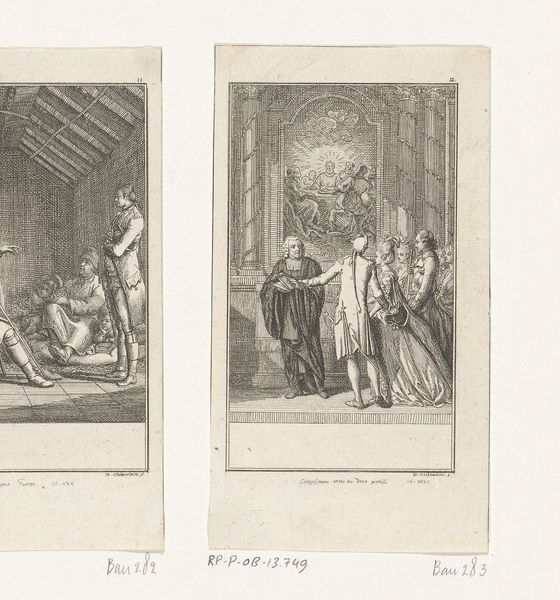
Voorstelling uit de geschiedenis van de Nederlandse stadhouders 1796
0:00
0:00
print, etching, paper, engraving
#
aged paper
#
toned paper
#
parchment
# print
#
etching
#
old engraving style
#
paper
#
tea stained
#
personal sketchbook
#
journal
#
old-timey
#
genre-painting
#
history-painting
#
golden font
#
engraving
#
columned text
Dimensions: height 106 mm, width mm
Copyright: Rijks Museum: Open Domain
Editor: Here we have "Voorstelling uit de geschiedenis van de Nederlandse stadhouders," an etching and engraving by Christian Gottlieb Geyser, dating back to 1796. The print, split into two scenes, evokes a feeling of clandestine plotting, perhaps due to the stark contrast and enclosed settings. What compositional elements stand out to you in this work? Curator: Observe how Geyser employs stark linearity to delineate space and form. Notice the almost diagrammatic quality in the architectural rendering – the bars of the window in the left panel, for example, or the tiled floor on the right. It's less about illusionistic depth and more about a structured presentation of pictorial space. What effect does this linear emphasis produce? Editor: It feels almost like stage sets, isolating the figures. The emotional impact comes from their gestures, not from a realistic environment. Curator: Precisely. The formal qualities point us towards the conceptual. Geyser uses line to divide and define. Note, also, the calculated placement of text, integrated as a compositional element beneath each vignette, rather than merely a caption. Does the lettering not seem to press up and hold up the image? Editor: I see what you mean. The text almost becomes part of the structure, grounding the scenes. Curator: It reinforces the sense that we are looking at a constructed narrative. Consider the stark contrast; its significance, and how that illuminates, or fails to illuminate the content. The subject of history then is clearly a mediated artifact and what, then, are we to conclude? Editor: I never thought of the lettering as part of the composition, but it adds another layer to how we interpret the piece. It seems the focus on construction over pure representation emphasizes the manipulation of history itself. Curator: Indeed. A work such as this underscores how form actively shapes, rather than simply reflects, our understanding of content.
Comments
No comments
Be the first to comment and join the conversation on the ultimate creative platform.
